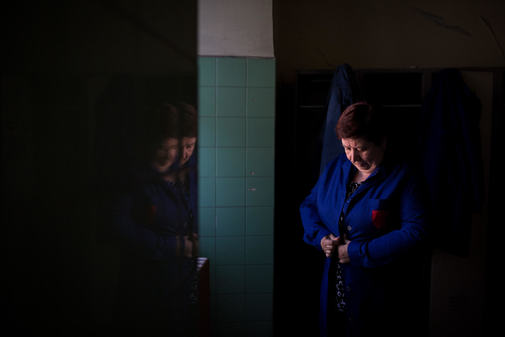There is a Madrid that does not show any coordinates when googling it.
Nor does it appear on the maps or on the street charts.
It is a Madrid with blurred contours, sustained only by the memories of those who, long ago, squeezed it out.
The same ones who used to evoke it on Sunday afternoons, finishing the penultimate drink,
with an anecdote in the mouth and a groan in the body
.
In the neighborhood of Embajadores, that Madrid of yesteryear continues to beat.
You just have to know how to look for it.
Dominated by the silhouette of
the old tobacco factory
, the postcard from which the cigarette shops that occupied it for two centuries were erased is still presided over by the Tabacalera building.
Their workshops no longer host any life.
And the tenant who now transits the stairs is the dust that accumulates on them.
Despite the fact that the factory closed its doors a couple of decades ago, the trail of those workers can be followed inside and outside those walls.
Pioneers of the workers' struggle, their history is that of hundreds and hundreds of women who never stopped fighting,
starring in countless uprisings, strikes and riots
against the lowering of wages, the poor quality of the paper and the tobacco with which they worked piecework. or the threat posed to their jobs by the introduction of new machines.
Outside the old factory, now partially converted into a cultural center, the traces of its former workers are still visible in a handful of corners.
Compiled as part of the Cigarrerasdoc research project, which aims to
disseminate the collective memory of so many grandmothers, mothers and daughters
who practiced the same trade, these enclaves safeguard a pinch of their history.
Flower, old cigarette case, in the factory.JAVIER CARBAJALCIGARRERASDOC
The
corralas of the old district of the Inclusa
where many of them lived are an example.
Some, like the one on Tribulete Street, were restored and even declared a National Monument.
Others, such as the current Museum of Popular Arts and Traditions, located on Carlos Arniches street, have become a cultural center, while many have ended up disappearing.
A short distance away,
the Mercado de San Fernando
, also frequented by many cigar makers, is witness to the passing of the years, as is
the Colegio San Alfonso
.
Located in Mesón de Paredes, in the past it had many daughters of operators as students.
Later, in 1859, Queen Elizabeth II, together with the ladies of the court, gave the name of San Alfonso to the old Tabacalera Schools.
Much more recent are the scenes that the former workers have starred in at
the Peyma
, on Embajadores street, in whose bar they leaned over at coffee time.
The same occurs
with the Freidencia de Gallinejas or with Casa Pepe
, establishments that today continue to witness the reunions of the last generation of workers.
On the other hand, there is no trace left of the old
Tobacco Federation Center
, where the cigar makers opened their own library, just as there is no longer any vestige of
the Maternity House
on Casino Street, which welcomed their children while they worked.
This is also the case of
the Barbieri Theater
, built on a site on Primavera Street.
There the cigar makers held many of their councils and assemblies.
They raised their voices to demand the introduction of the minimum wage or to abolish piecework.
Voices that, hopefully, are not silenced by oblivion.
According to the criteria of The Trust Project
Know more
Madrid
culture
Music c.
Tangana: "In Spain we do not claim many things because we have a stupid cultural complex"
Cultural agendaDouble appointment with the mutant pop of María Arnal and Marcel Bagés
Cultural agenda Inma Cuevas: "Theater is addictive, a very strong drug"
See links of interest
Work calendar
Huesca - Celta de Vigo
Malaga - Sabadell
Liverpool - Fulham
Crotone - Torino
Atlético - Real Madrid, live

